Ankylosaurus
Name Origin
Fused Lizard
Family
Ankylosauridae
Classification
Diapsida, Ornithischia, Thyreophora
Habitat (Discovery Location)
United States, Canada
Period
Approximately 68 to 66 million years ago (Late Cretaceous)
Length
Approximately 10 meters
Weight
Approximately 6 to 8 tons
Diet
Herbivore (Plant-eater)
 Jurassic
Jurassic
Park / World Featured Dinosaur
Appearance in Jurassic Park III
Jurassic Park III marked the Ankylosaurus's debut appearance in the series.
In the film's lore, the Ankylosaurus was one of the dinosaur species secretly created by Simon Masrani after he acquired InGen. They were illegally cloned in the Isla Sorna labs following the establishment of the Gene Guard Act. Other dinosaurs created during this same period include the Ceratosaurus, Corythosaurus, and the film's signature dinosaur, the Spinosaurus. After InGen abandoned the labs, several individuals were released onto the island, and by the time of the film, they were wandering the jungle in a feral state.
However, its screen time in the movie is extremely brief. Its main role was "eating grass in the jungle," resulting in a very short appearance.
The individuals that appeared had a primarily black coloration, a dark tan underbelly, and red markings around the eyes. Because the scene itself is dark and their appearance is so brief, you have to watch closely not to miss them.
While it is often assumed their only appearance is in the aforementioned jungle scene, they are also seen later on a riverbank alongside a Brachiosaurus. Furthermore, a shot of them moving in the river during the boat sequence, as well as a scene of the herd crossing the river, were also filmed, but these were cut and not used in the final film.Appearance in Jurassic World
Four Ankylosaurus living on Isla Nublar appear in the film. These individuals are presumed to have been transported from Isla Sorna, but their appearance is significantly different from their Jurassic Park III counterparts; they are characterized by an all-gray coloration and are about 1 meter taller.
In the film, they are not on public display within the park. Instead, they are seen wandering in a feral state outside the main enclosures (on the other side of the fence). It is unclear why they were not available for public viewing, but they demonstrate immense power, cracking the reinforced glass of a Gyrosphere—which is tough enough to stop a .44 Magnum bullet—with a single swing of their tail. It is possible they were kept isolated due to these extreme safety concerns.
Midway through the story, the four are resting in the forest when they are startled by the Indominus rex, which appears silently in front of them, causing them to flee. However, one individual, unable to escape in time, is forced into a life-or-death battle with the Indominus.
The Ankylosaurus attacks with its signature tail club, but the blow is ineffective against the Indominus. It is quickly overpowered: its hind leg is injured, it is flipped onto its back, and it is finally killed when the Indominus bites down and crushes its neck.
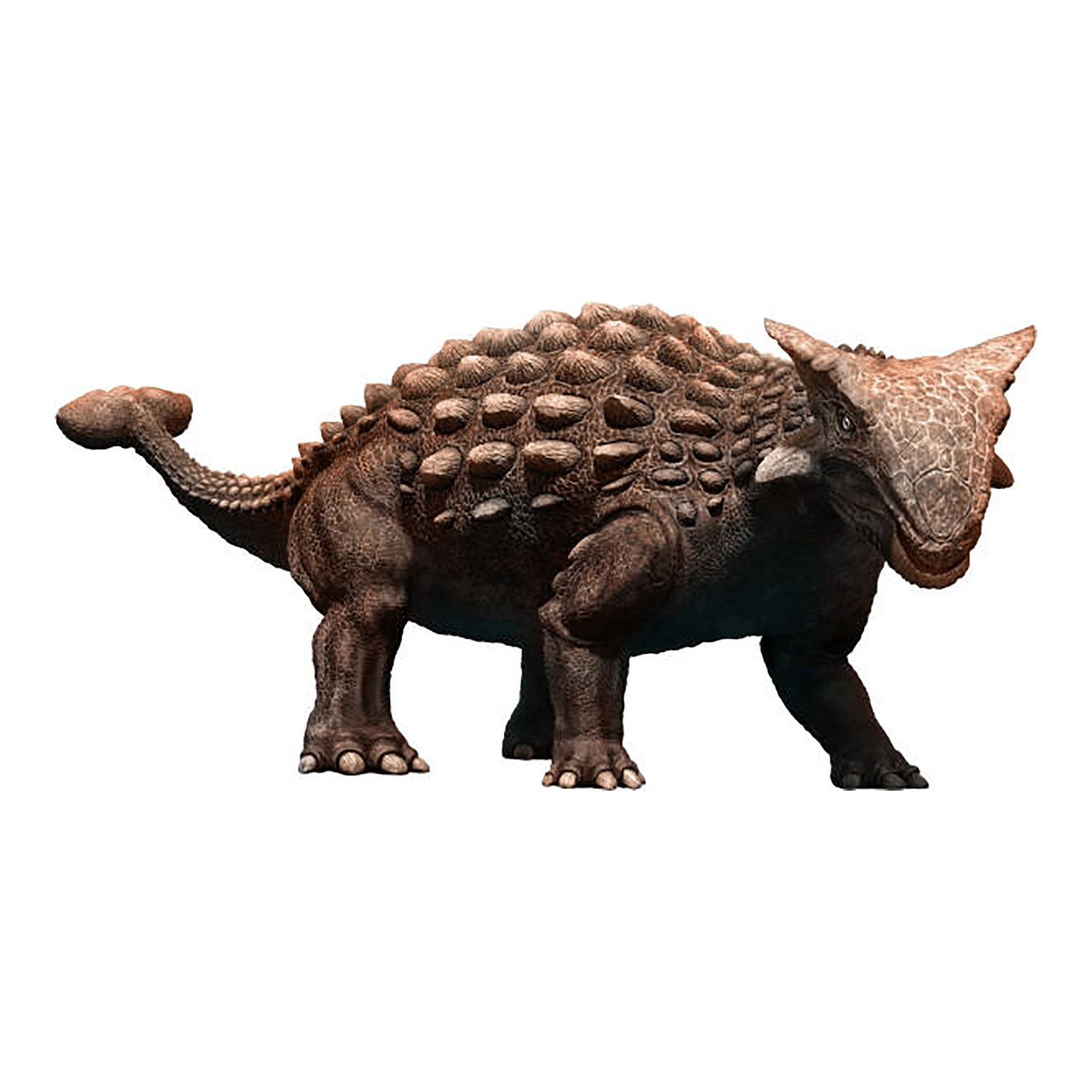


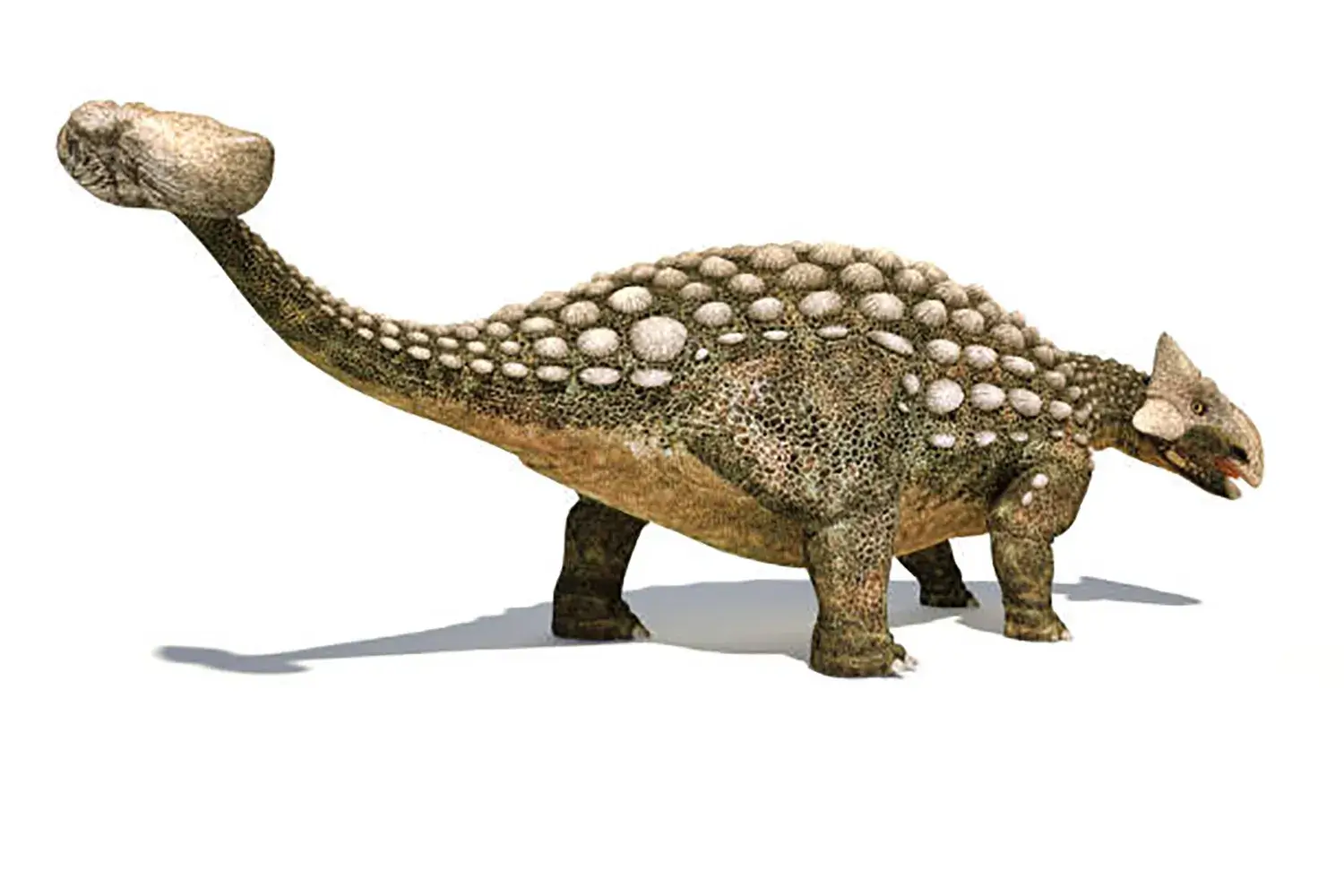
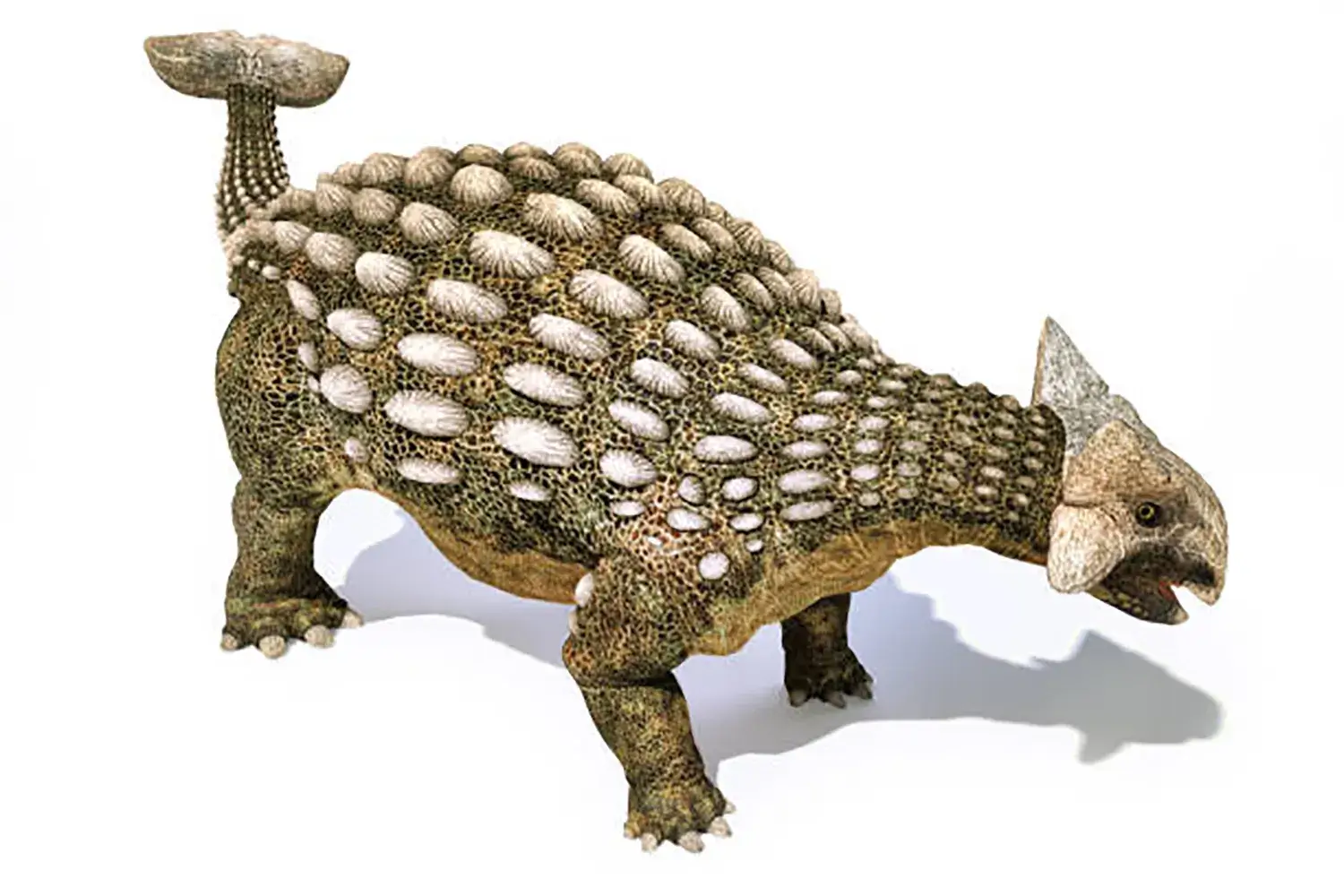

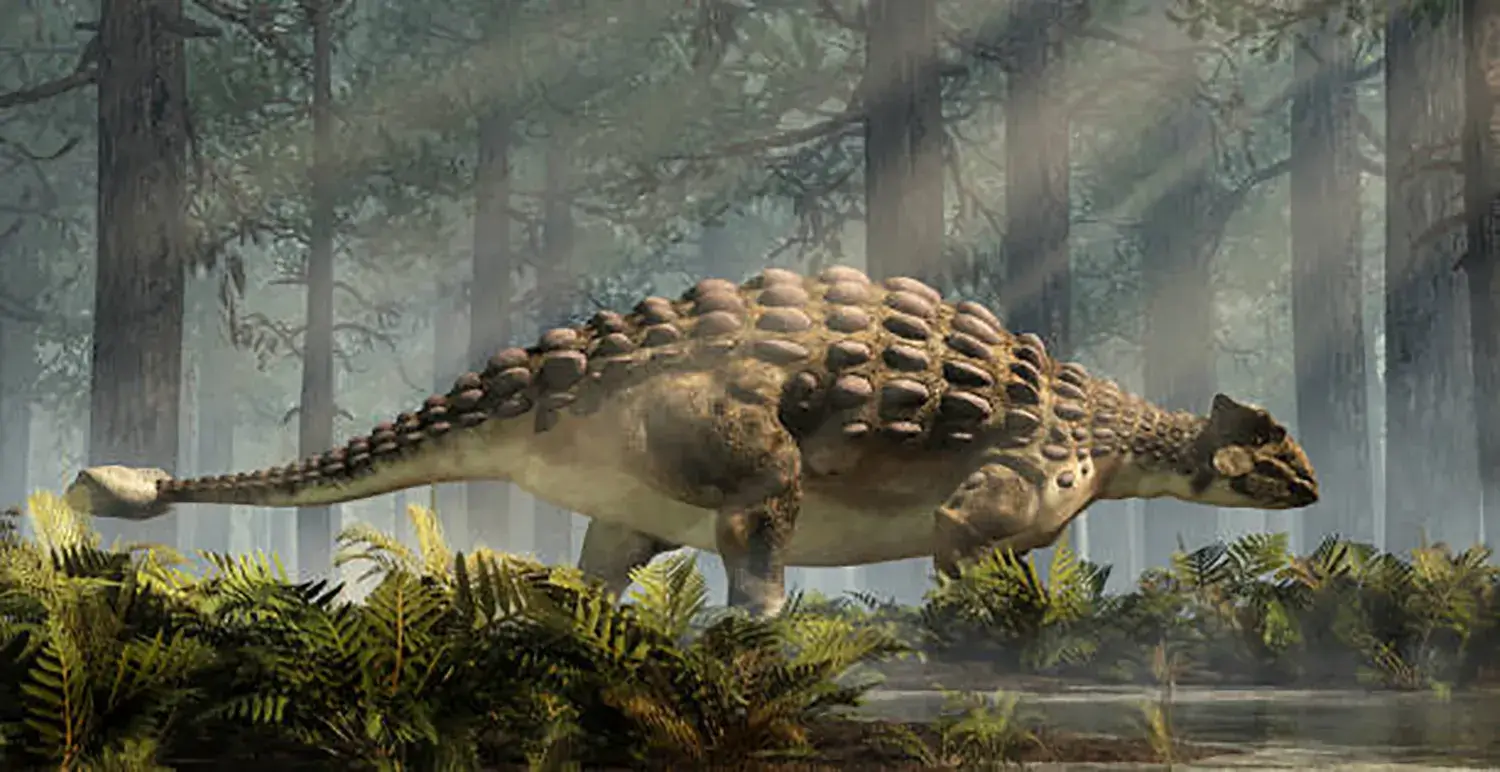
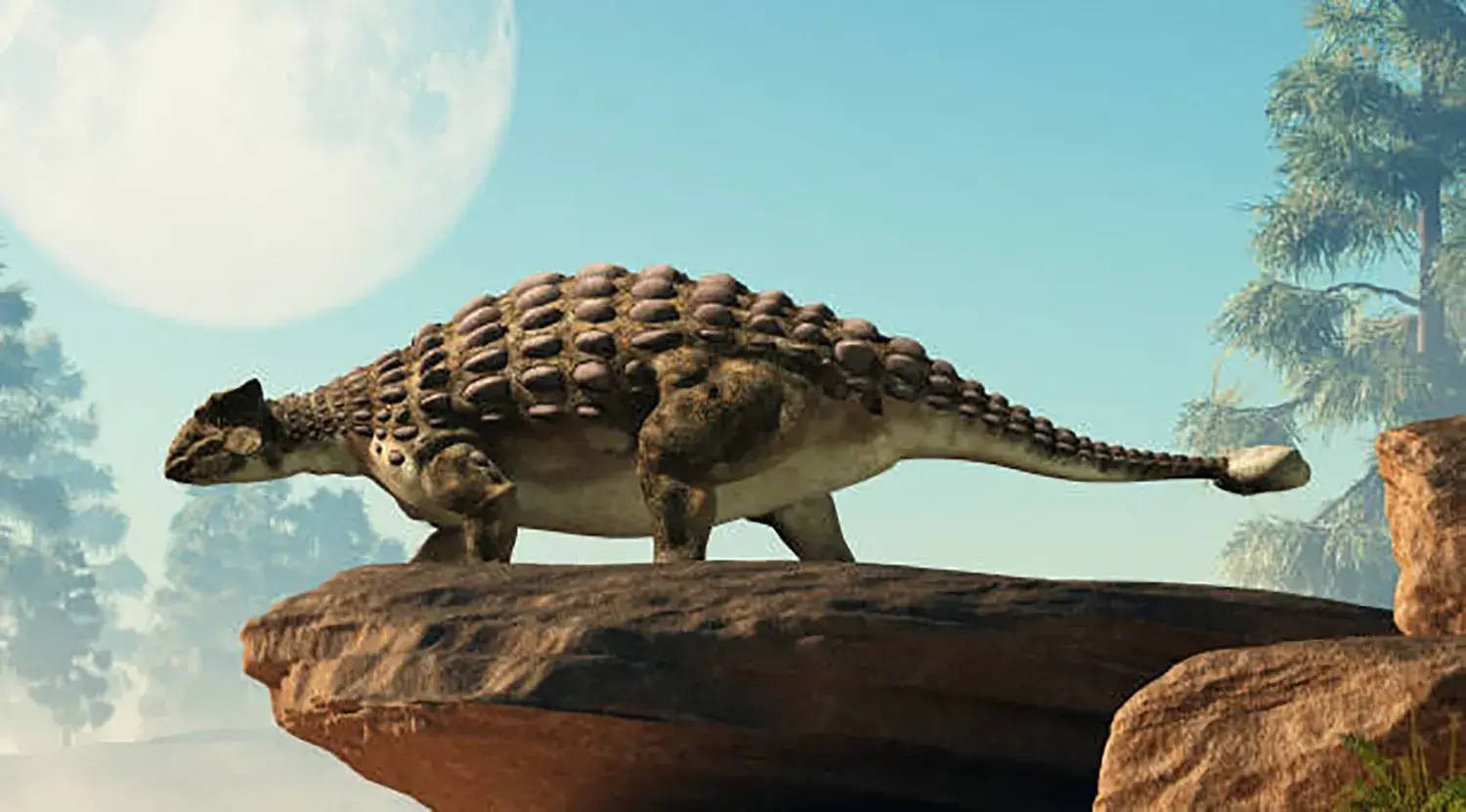
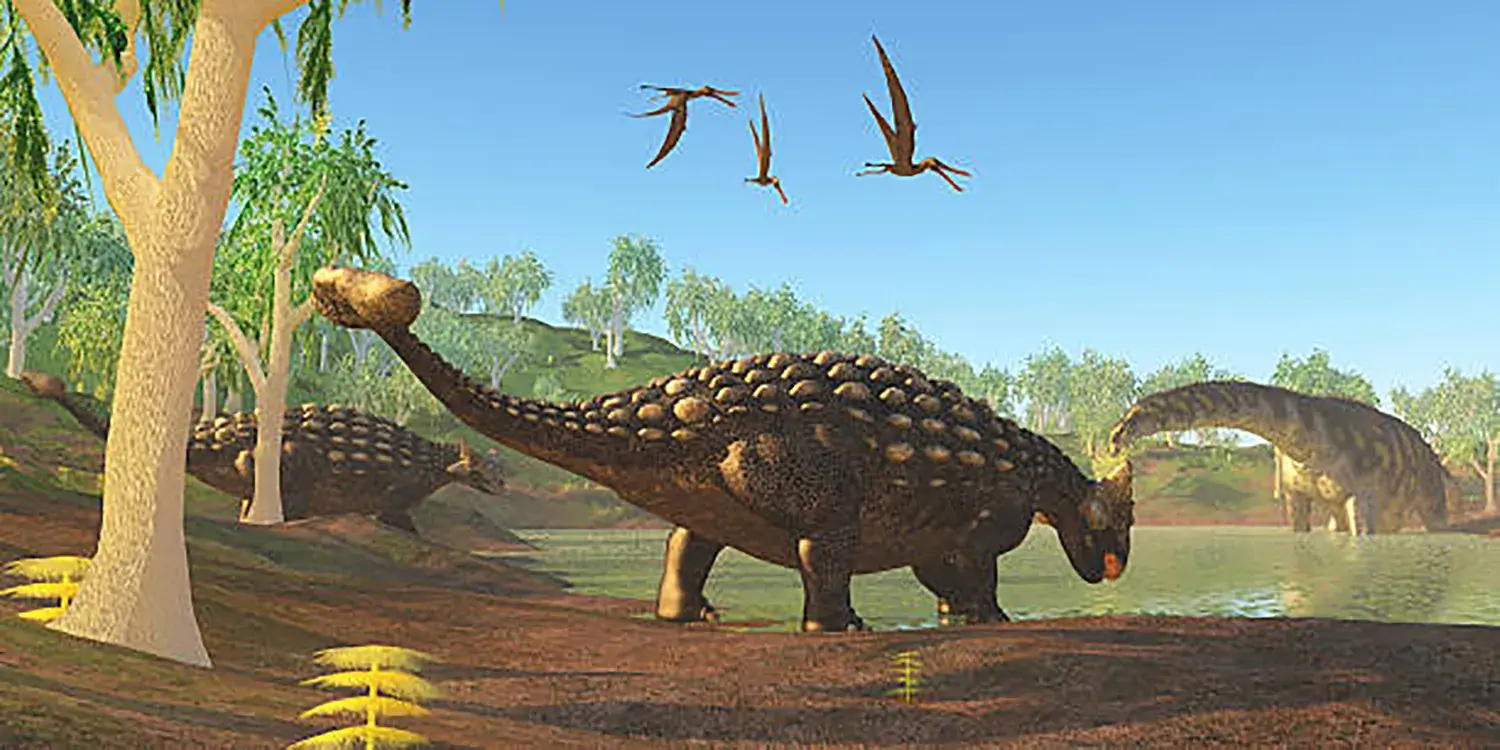
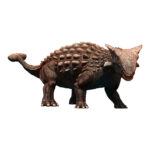
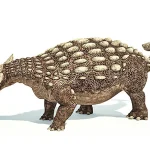
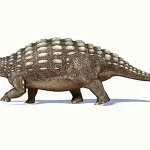
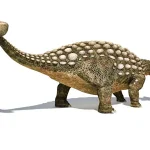
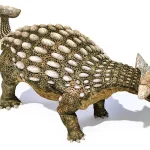

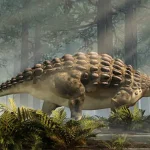
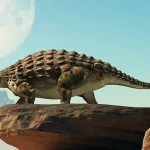

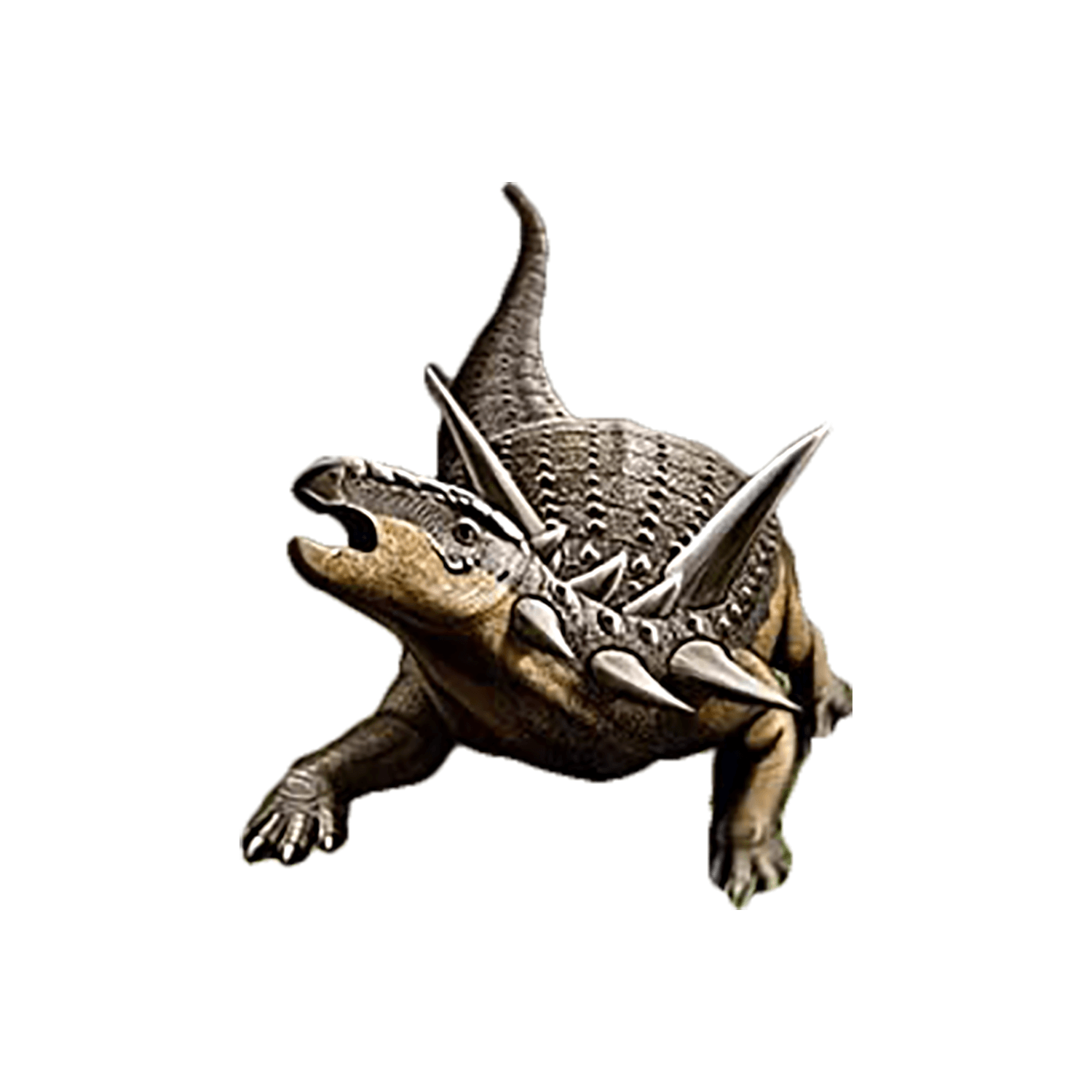
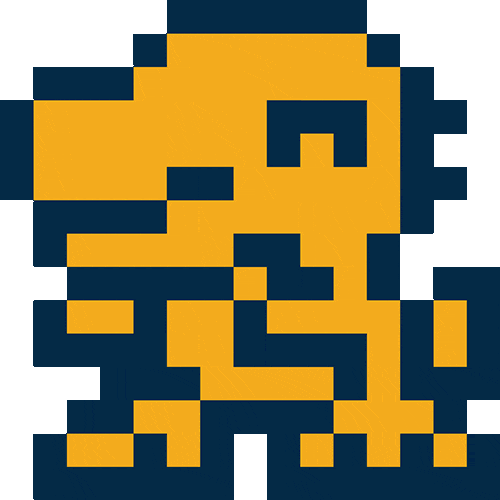

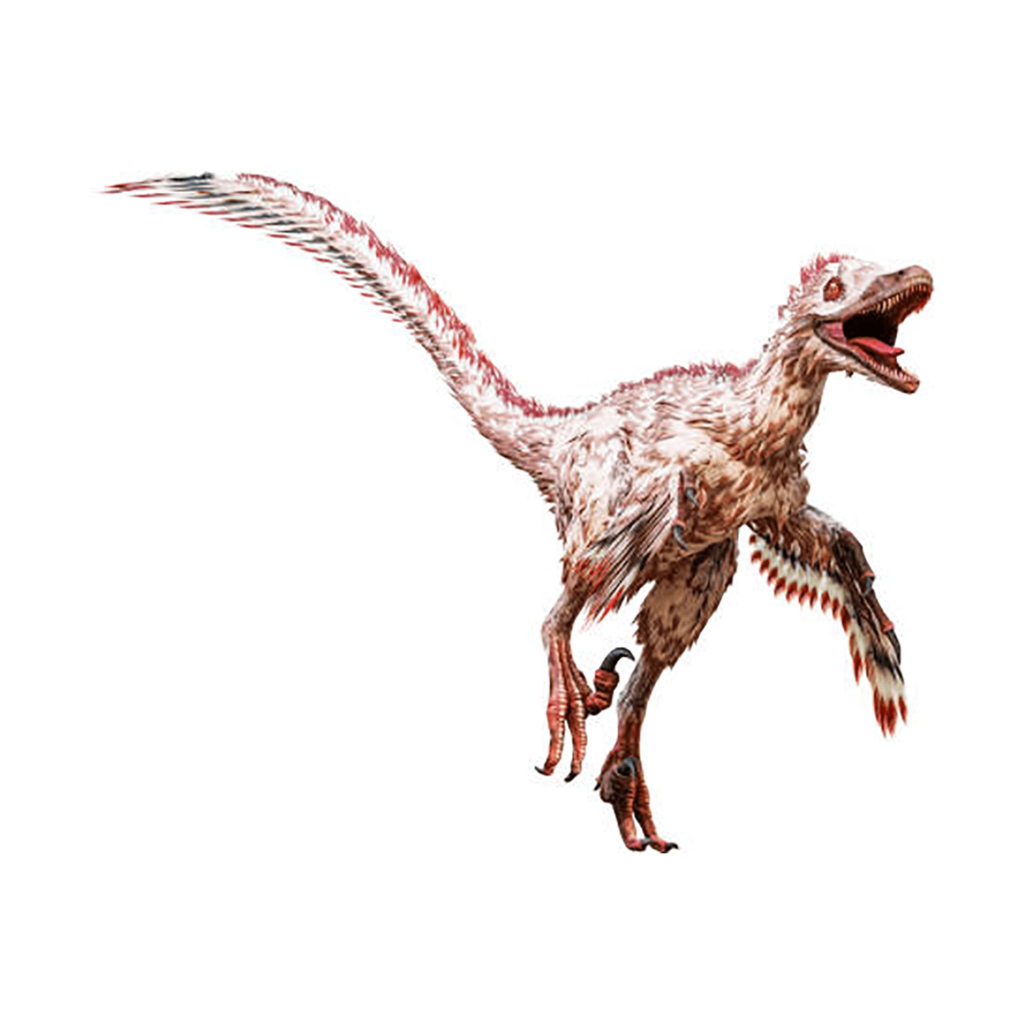
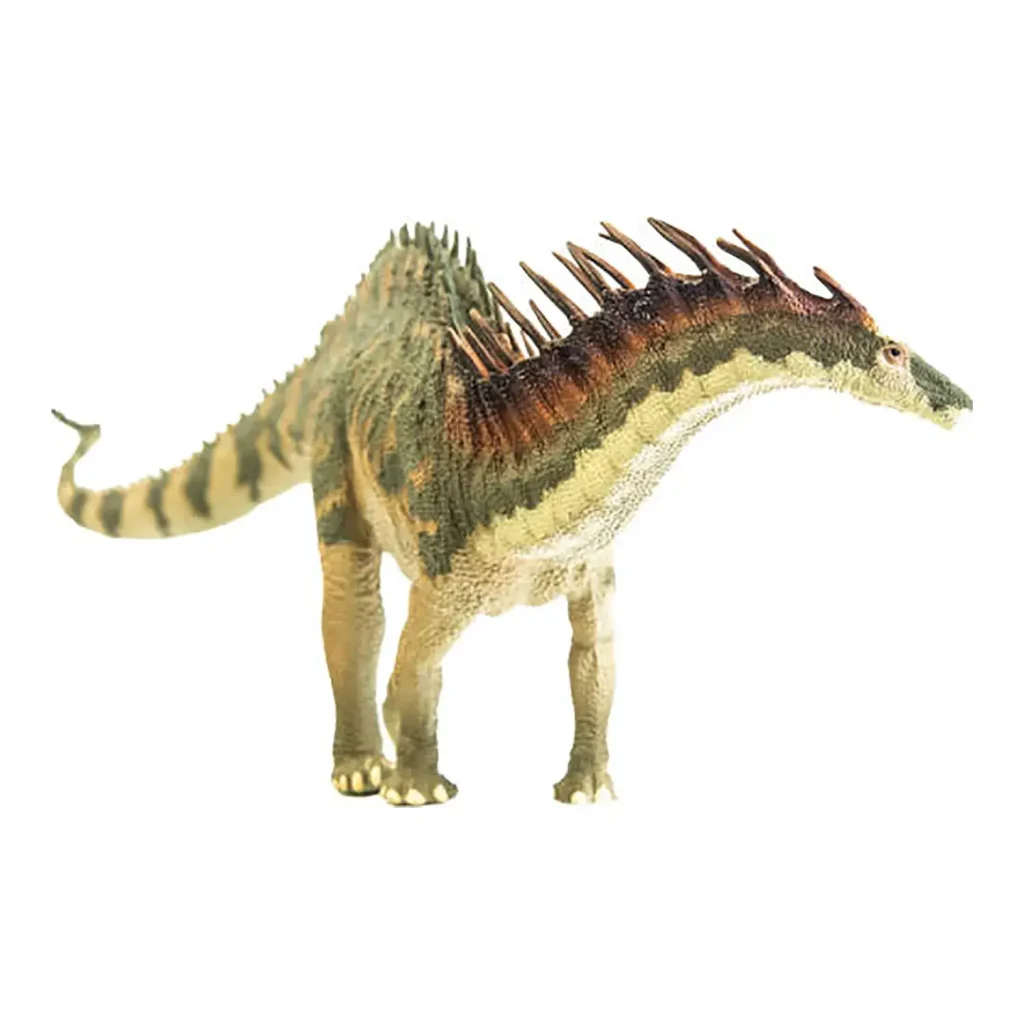
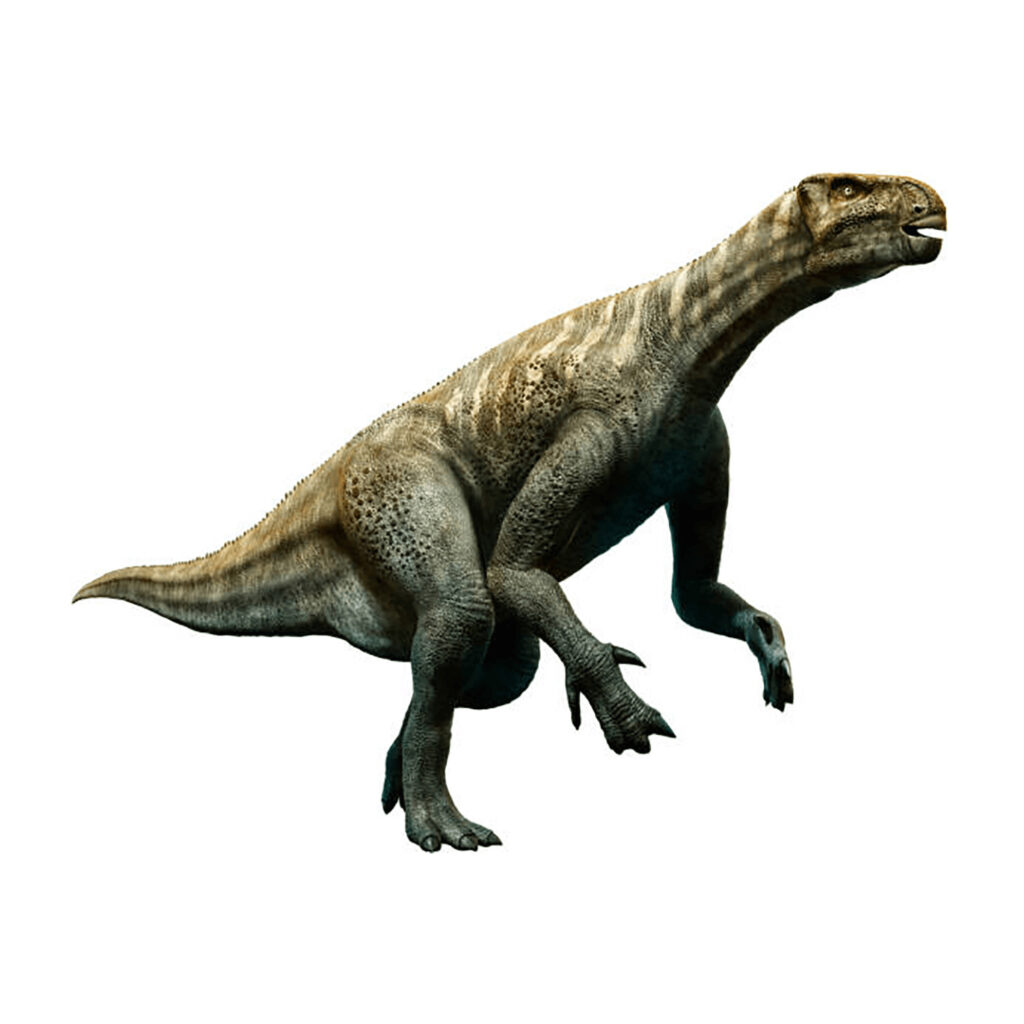
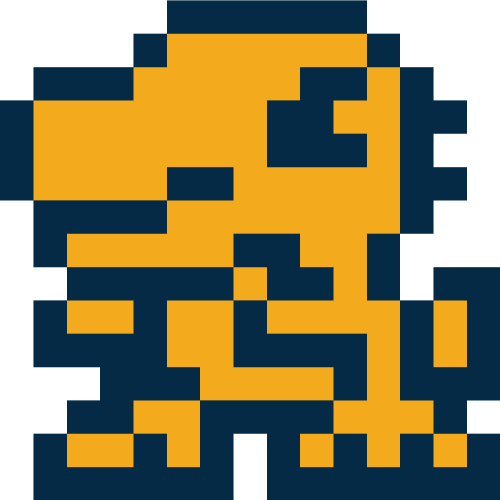
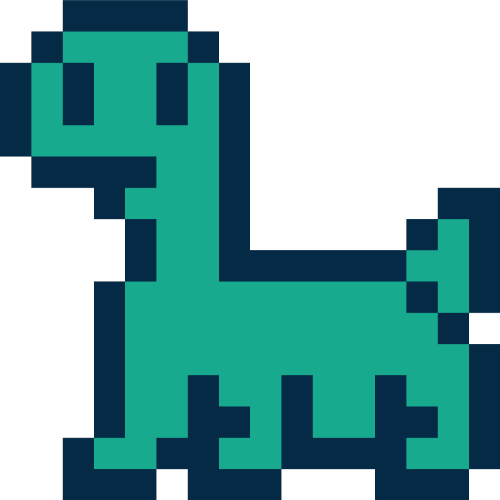
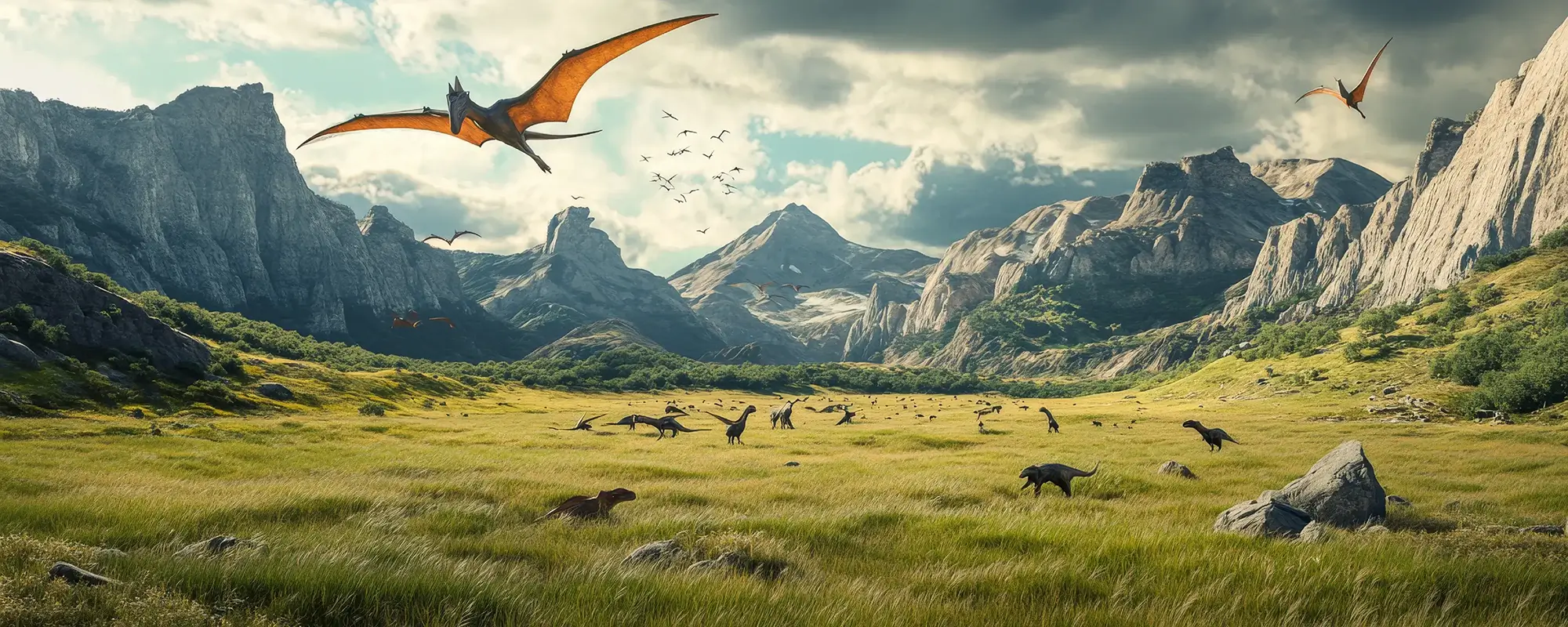



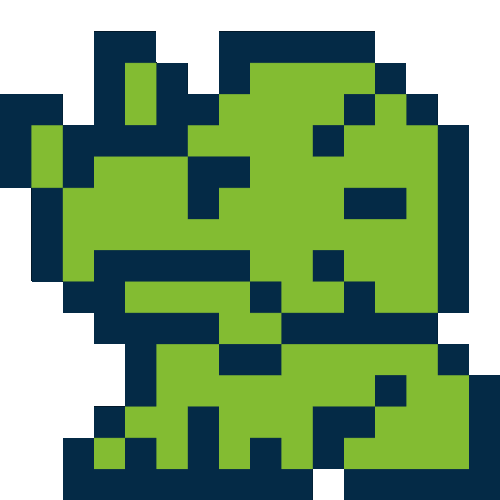
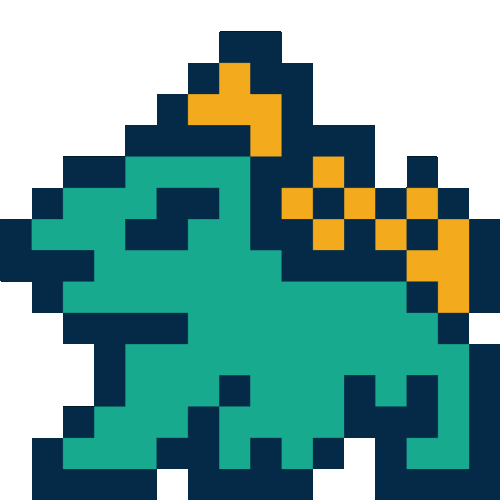





Description
Ankylosaurus is a synonym for the armored dinosaurs (ankylosaurids) that lived in North America during the Late Cretaceous period.
Its name, meaning “fused lizard,” comes from its heavy armor covering its entire body and the giant hammer at the end of its tail, which are its trademarks.
Its trademarks were its heavy armor and a giant hammer at the end of its tail
Impenetrable Defense and the Ultimate Weapon
The greatest strength of Ankylosaurus was its thorough defense.
Its back was covered in a hard, bony shield (osteoderms), like a suit of armor, from which countless horns protruded.
The bones of its skull were also thick, and it even had bony armor over its eyelids, leaving almost no weak points.
This impenetrable defense was like an “unassailable moving fortress.”
An unassailable moving fortress
It is believed that even a large carnivorous dinosaur like Tyrannosaurus would have hesitated to attack a fully grown Ankylosaurus.
Furthermore, at the end of its tail, Ankylosaurus had a giant mass of bone, a hammer known as a “tail club.”
The bones in the latter half of the tail were fused together, forming a stiff handle for swinging the hammer.
This allowed it to swing the club from side to side at a powerful speed, using the flexible muscles at the base of its tail.
It could swing the hammer from side to side at a powerful speed
According to a 2009 study, a single blow from this hammer could generate a force of up to 364 to 718 MPa (megapascals), which was powerful enough to shatter the leg bones of a Tyrannosaurus.
The height of the tail was right at a Tyrannosaurus’s knee, so a direct hit could inflict serious damage.
Ankylosaurus compensated for its weakness of being a slow walker with this hard armor and powerful weapon, allowing it to thrive for millions of years.
A Mysterious Full Body and a Unique Diet
Despite being so famous, no complete skeleton of Ankylosaurus has ever been discovered, making it a dinosaur shrouded in mystery.
Our knowledge of its appearance is a reconstruction based on fragmentary fossils like skulls and armor, as well as research data from its close relative Euoplocephalus, for which a more complete fossil record exists.
Ankylosaurus was a herbivore with a beak-like snout.
Its teeth were small and weak, so it could not chew hard plants. It appears to have eaten plants, such as ferns, by plucking them with its wide beak and swallowing them almost whole.
According to a 2017 study, it is estimated to have needed about 60 kg of ferns per day.
It is estimated to have needed about 60kg of ferns per day
The Secret of Its Surprising Skull and a History of Success
A CT scan of an Ankylosaurus skull revealed a complex interior of its nasal passages.
The air passage deep inside its nose was divided into eight small chambers, leading to the interesting theory that it functioned as an “air conditioner” to warm and humidify inhaled air, or as a “resonating chamber” to produce loud calls.
Ankylosaurus is one of the most famous dinosaurs of the late Cretaceous period, but one reason a complete skeleton has not been found in over a century is the theory that its population was originally very small.
If this theory is correct, it means that they lived with a limited population even in their heyday.
As evidence, no Ankylosaurus fossils have been excavated from the very end of the Cretaceous period, leading some to believe that it was one of the few dinosaur species that “did not witness the moment of mass extinction.”